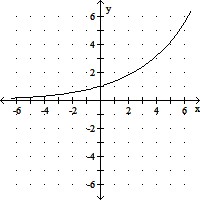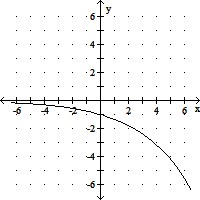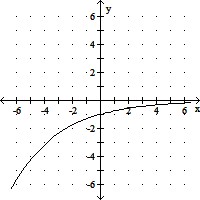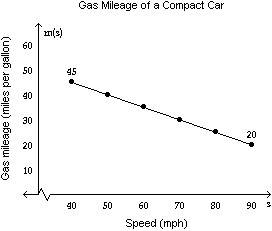Write the expression in expanded form.loga 
A. 4 loga x +  loga (x + 5) - 2 loga(x - 2)
loga (x + 5) - 2 loga(x - 2)
B. loga x4 + loga(x + 5)-3 - loga(x - 2)2
C. loga x4 + loga(x + 5)1/3 - loga(x - 2)2
D. 4 loga x - 3 loga(x + 5) - 2 loga( x - 2)
Answer: A
You might also like to view...
Provide an appropriate response.
Given the graphs of the equations y = x2 and y = -x2 shown below, what might the graphs of the equations x = y2 and x = -y2 look like?

What will be an ideal response?
Find the equilibrium point for the pair of demand and supply functions.D(p) = 3100 - 8pS(p) = 2900 + 2p
A. ($40, 2780) B. ($4, 3260) C. ($20, 2940) D. ($8, 3420)
Graph the function.f(x) =  x
x
A. 
B. 
C. 
D. 
Solve the problem.The gas mileage, m, of a compact car is a linear function of the speed, s, at which the car is driven, for  For example, from the graph we see that the gas mileage for the compact car is 45 miles per gallon if the car is driven at a speed of
For example, from the graph we see that the gas mileage for the compact car is 45 miles per gallon if the car is driven at a speed of 
 Find and interpret the average rate of change in gas mileage between speeds of 40 mph and 90 mph.
Find and interpret the average rate of change in gas mileage between speeds of 40 mph and 90 mph.
A. -0.75 miles per gallon/mph; Between speeds of 40 mph and 90 mph, gas mileage decreases at a rate of 0.75 miles per gallon for each 1 mph increase in speed. B. -0.5 miles per gallon/mph; Between speeds of 40 and 90 mph, speed decreases at a rate of 0.5 miles per hour for each 1 mpg increase in gas mileage. C. -0.5 miles per gallon/mph; Between speeds of 40 mph and 90 mph, gas mileage decreases at a rate of 0.5 miles per gallon for each 1 mph increase in speed. D. 0.5 miles per gallon/mph; Between speeds of 40 and 90 mph, gas mileage increases at a rate of 0.5 miles per gallon for each 1 mph increase in speed.